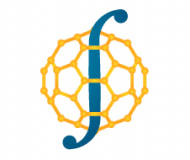Уважаемые коллеги!
Спешим сообщить Вам о том, что по итогам XI ежегодной конференции НОР идет прием полнотекстовых научных статей для спецвыпуска журнала International Journal of Nanotechnology (индексируется в Scopus, профиль журнала в Elibrary: http://elibrary.ru/title_about.asp?id=17773).
Дедлайн по приему статей — 28 февраля 2021 года, статьи принимаются на адрес электронной почты: orgnanosociety@mail.ru
Требования к оформлению статей не поменялись и приложены.
Статьи должны быть оформлены на английском языке, строго в соответствии с правилами для авторов. С учетом сложностей, возникавших при подготовке прошлых публикаций с этого года, вводятся следующие уточнения:
- каждый автор подаваемой к рассмотрению статьи должен состоять в НОР и не иметь задолженности по уплате членских взносов;
- авторы осуществляют перевод за свой счет, редакционная группа НОР бесплатно осуществляет аудит (неудачно сделанный перевод рекомендуется доработать); мы можем рекомендовать переводчика, который готов сделать перевод за средства авторов;
- для статей, которые успешно прошли этап рецензирования и рекомендованы к публикации, мы будем взимать сбор в размере 10 000 рублей за одну статью (вне зависимости от количества авторов), который пойдет на оплату сотрудникам за взаимодействие с международной издательской группой; это позволит нам существенно ускорить процесс подготовки спецвыпуска; важное уточнение, оплата не влияет на решение о принятии статьи, она взимается после и только в случае положительного решения.
С уважением,
Секретариат НОР
e-mail: orgnanosociety@mail.ru ,
secretary@rusnor.org
Общероссийская общественная организация
Нанотехнологическое общество России
http://www.rusnor.org/
Вице-президент НОР, профессор кафедры микро и наноэлектроники МИФИ Лев Николаевич Патрикеев приглашает принять участие в 62-м научном семинаре НОР-МИФИ, который пройдет в аудитории А100 ( главный корпус НИЯУ МИФИ, первый этаж) в четверг 19 декабря. Начало в 14:30.
В первой части семинара выступит ведущий научный сотрудник ИФХЭ РАН, профессор, доктор химических наук Ревина Александра Анатольевна с докладом « Особенности и свойства мицеллярной воды» (ранее доклад был представлен на Президиуме РАН).
Во второй части, сразу после доклада состоится традиционный мини-концерт.
Для участия необходимо до 16 декабря прислать на адрес секретариата НОР orgnanosociety@mail.ru ФИО и номер паспорта для оформления пропуска в МИФИ.
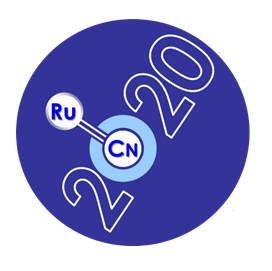 Глубокоуважаемые коллеги!
Институт элементоорганических соединений им. А.Н. Несмеянова РАН
Глубокоуважаемые коллеги!
Институт элементоорганических соединений им. А.Н. Несмеянова РАН совместно с Государственной целевой лабораторией по элементоорганической химии Нанкайского университета (г. Тяньцзинь, Китай) приглашает Вас принять участие в 1-м Российско-Китайском симпозиуме по элементоорганической химии.
Симпозиум направлен на развитие устойчивого долгосрочного российско-китайского сотрудничества, расширение научного взаимодействия и обмена информацией о результатах исследований в различных областях элементоорганической химии; развитие внутрироссийской и международной коммуникации между научным, образовательным, и бизнес-сообществами, обсуждение возможности выполнения совместных проектов и создания совместной российско-китайской лаборатории по проблемам элементоорганической химии.
Основные тематические направления Симпозиума:
• элементоорганическая и координационная химия
• гомогенный и гетерогенный катализ
• элементоорганические полимеры и функциональные материалы
• супрамолекулярная химия
• элементоорганические и макромолекулярные соединения для химии материалов
Программой конференции предусмотрены пленарные доклады ведущих российских и китайских ученых, устные сообщения и стендовые сессии.
 Официальное приглашение
Актуальная информация о Симпозиуме и условиях участия
Информация о конференциях, проводимых Институтом элементоорганических соединений им. А.Н. Несмеянова РАН в 2020 году
По вопросам участия в конференциях Института элементоорганических соединений им. А.Н. Несмеянова РАН обращаться к заместителю начальника инновационного отдела Тюриной Ольге Владимировне:
Официальное приглашение
Актуальная информация о Симпозиуме и условиях участия
Информация о конференциях, проводимых Институтом элементоорганических соединений им. А.Н. Несмеянова РАН в 2020 году
По вопросам участия в конференциях Института элементоорганических соединений им. А.Н. Несмеянова РАН обращаться к заместителю начальника инновационного отдела Тюриной Ольге Владимировне:
8 915 383 84 81
8 499 135 61 28
18 апреля в 15-00 в актовом зале Музея НИЯУ МИФИ по адресу: Москва, ул. Москворечье, д.6 (Музей МИФИ) состоится научный семинар НОР-НИЯУ МИФИ.
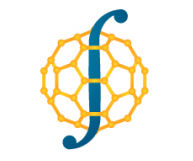
Докладчик: Егоров Владимир Константинович, Институт проблем технологии микроэлектроники РАН, г. Черноголовка, Московская обл.
Тема семинара « Ионно-лучевая диагностика легких элементов».
Секретарь семинаров НОР-МИФИ, вице-президент НОР
профессор Л.Н. Патрикеев (т. 8-916-686-6148).

Фонд инфраструктурных и образовательных программ (группа РОСНАНО) является партнером проведения научных семинаров НОР-МИФИ.
Проезд к Музею НИЯУ МИФИ:
ул. Москворечье, д.6 (в здании Поликлиники МИФИ ).
1) Метро Каширская (первый вагон из центра), далее авт. 162, выход на 3-й остановке.
2) Метро Кантемировская (последний вагон из центра), далее авт. 701 или 901, или трол. №11, выход на второй остановке.
21 марта в 15-00 в актовом зале Музея НИЯУ МИФИ по адресу: Москва, ул. Москворечье, д.6 (Музей МИФИ) состоится научный семинар НОР-НИЯУ МИФИ.
Докладчик: ведущий научный сотрудник Института электрохимии им. А.Н. Фрумкина РАН, член экспертного совета Концерна «Наноиндустрия», доктор химических наук, профессор Александра Анатольевна Ревина.
Тема доклада: Самоорганизация наночастиц металлов в обратных мицелах.
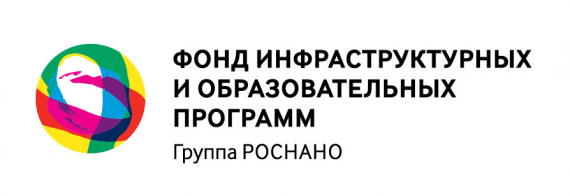 Фонд инфраструктурных и образовательных программ (группа РОСНАНО) является Генеральным партнером Х Юбилейной конференции НОР 26-28 марта 2019
Проезд к Музею НИЯУ МИФИ:
Фонд инфраструктурных и образовательных программ (группа РОСНАНО) является Генеральным партнером Х Юбилейной конференции НОР 26-28 марта 2019
Проезд к Музею НИЯУ МИФИ:
ул. Москворечье, д.6 (в здании Поликлиники МИФИ ).
1) Метро Каширская (первый вагон из центра), далее авт. 162, выход на 3-й остановке.
2) Метро Кантемировская (последний вагон из центра), далее авт. 701 или 901, или трол. №11, выход на второй остановке.
Секретарь семинаров НОР-МИФИ,
вице-президент НОР, профессор
Лев Николаевич Патрикеев (т. 8-916-686-6148).
21 февраля в 15-00 в актовом зале Музея НИЯУ МИФИ по адресу: Москва, ул. Москворечье, д.6 (Музей МИФИ) состоится научный семинар НОР-НИЯУ МИФИ.
Докладчик: профессор РАН и СколТеха Артем Оганов.
Тема семинара « Методы предсказания свойств кристаллической структуры».
Артем Оганов – известный во всем мире химик-кристаллограф. Журналом Forbes он отмечен в списке «10 самых успешных российских ученых», а экспертные журналы РФ выделяют его среди «100 самых влиятельных россиян».
Секретарь семинаров НОР-МИФИ, вице-президент НОР
профессор Л.Н. Патрикеев (т. 8-916-686-6148).
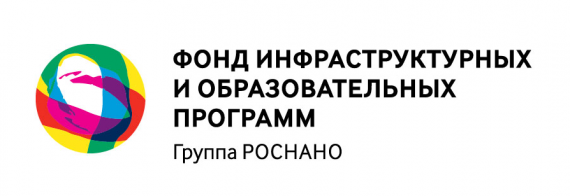 Фонд инфраструктурных и образовательных программ (группа РОСНАНО) является Генеральным партнером Х Юбилейной конференции НОР 26-28 марта 2019
Фонд инфраструктурных и образовательных программ (группа РОСНАНО) является Генеральным партнером Х Юбилейной конференции НОР 26-28 марта 2019
Проезд к Музею НИЯУ МИФИ:
ул. Москворечье, д.6 (в здании Поликлиники МИФИ ).
1) Метро Каширская (первый вагон из центра), далее авт. 162, выход на 3-й остановке.
2) Метро Кантемировская (последний вагон из центра), далее авт. 701 или 901, или трол. №11, выход на второй остановке.
Уважаемые коллеги!
Ознакомьтесь, пожалуйста, с важной и интересной новостью Нанотехнологического общества России.
В феврале 2019 стартует е-мейл игра «ПУТЕШЕСТВИЕ ВО ВРЕМЕНИ».
Поклонникам творчества Александра Беляева, Ивана Ефремова, Жюля Верна, Герберта Уэллса и других великих мастеров научной фантастики мы предлагаем увлекательное мысленное путешествие, которое придется совершить в команде единомышленников, обогнав при этом другие команды. За четыре такта каждого раунда, примерно за четыре недели, участникам придется описать использование технологии, которая известна сегодня, но не была известна там, куда мы мысленно перенесемся.
Все участники будут поделены на команды по 5 человек, причем мы будем стараться, чтобы члены одной команды физически находились как можно дальше друг от друга – в этом будет первый вызов. Каждая команда в конце раунда должна будет представить технологический маршрут, согласно вводной легенде, одинаковой для всех. Технология должна быть описана в виде литературного текста. По этой части будут выставляться две оценки: одна за научную точность – насколько реально воспроизвести то, что команда предлагает сделать, насколько это приведет к требуемому техническому решению, и вторая оценка за художественное качество текста. Кроме заданий на понимание и описание технологий, будут еще два вида состязаний в каждом раунде – творческие и аналитические. Эти задания будут, в основном, приходиться на выходные и потребуют от участников не только развитой эрудиции и умения работать с информацией в интернете, но и сплоченной командной работы.
Команда, набравшая по итогам раунда наибольшее количество баллов, получит книжки по нанотехнологиям, которые будут разосланы всем членам команды почтой.
Участие платное, каждый раунд будет стоить 1 тысячу рублей, но для всех участников первого раунда скидка 50%. Организаторы предусмотрели и еще более льготные условия, но о них уже нужно специально спрашивать.
Для участия нужно прислать письмо-заявку с темой «Путешествие во времени» и контактными данные (полные ФИО, почтовый и электронный адрес, телефон для связи) на адрес orgnanosociety@mail.ru и дальше следовать инструкциям от организаторов.
Крайний срок регистрации участников первого раунда – 25 января 2019.
20 декабря в 15-00 в актовом зале Музея НИЯУ МИФИ по адресу: Москва, ул. Москворечье, д.6 (Музей МИФИ) состоится 59-й научный семинар НОР-НИЯУ МИФИ.
В повестке дня два выступления на общую тему: « Десятилетний юбилей Нанотехнологического общества России».
Докладчики:
президент Нанотехнологического общества России, почетный президент группы компаний «NT-MDT Spectrum Instruments» В.А. Быков;
вице-президент Нанотехнологического общества России, исполнительный вице-президент Ядерного общества России С.В. Кушнарев.
На семинар приглашаются все заинтересованные лица. Вход свободный.
Проезд к Музею НИЯУ МИФИ:
ул. Москворечье, д.6 (в здании Поликлиники МИФИ ).
1) Метро Каширская (первый вагон из центра), далее авт. 162, выход на 3-й остановке.
2) Метро Кантемировская (последний вагон из центра), далее авт. 701 или 901, или трол. №11, выход на второй остановке.
Тел. для «потерявшихся»: 8-916-686-6148 Лев Николаевич.
Секретарь семинаров НОР-МИФИ, сотрудник НИИНТ, вице-президент НОР профессор Л.Н. Патрикеев (т. 8-916-686-6148).
В актовом зале Музея НИЯУ МИФИ по адресу: Москва, ул. Москворечье, д.6 (Музей МИФИ) раз в месяц поводятся научные семинары НОР–МИФИ. Начало каждого семинар в 15.00, окончание в 17.30.
18 октября пройдет семинар № 57. Докладчик П.А. Александров (НЦ Курчатовский институт). Тема: « Академик А.Г. Александров. Жизнь и деятельность»
15 ноября пройдет семинар № 58. Докладчик И.А. Криштафович (Академия наук Украины). Тема: « Биосфера как суперкомпьютер».
20 декабря пройдет семинар № 59. Докладчики С.В. Кушнарев, В.А. Быков. Тема: « 10 лет Нанотехнологическому обществу России».
Секретарь семинаров НОР-МИФИ, сотрудник НИИНТ, вице-президент НОР профессор Л.Н. Патрикеев.
На семинар НОР-МИФИ приглашаются все заинтересованные лица. Вход свободный.
Проезд к Музею НИЯУ МИФИ:
1) Метро Каширская. Автобус или троллейбус. Одна остановка до МИФИ и далее 80 м до ул. Москворечье, д. 6 (Здесь Поликлиника МИФИ и музей.)
2) Метро Кантемировская, автобус или троллейбус. До Управы района и 150 м пешком.
27 сентября в 15-00 в офисе Общероссийской общественной организации «Российская ассоциация содействия науке» по адресу: Москва, 1-й Пехотный переулок, д. 6, кор. 2, 2-й этаж – состоится научный семинар НОР. На семинаре будет представлен доклад «Биосфера как суперкомпьютер, направляющий эволюционные процессы». Докладчик – доктор технических наук Игорь Алексеевич Криштафович. Оппонент – кандидат биологических наук Денис Сергеевич Андреюк.
Информация о докладчике.
Криштафович Игорь Алексеевич. Окончил Киевский политехнический институт, получил учёные степени кандидата и доктора технических наук в Украинской Академии Наук. Специализируется в высоковольтной электротехнике. Опубликовал более ста научных статей и получил более 60 международных патентов. С 1994 года живёт в Сиэтле и занимается электростатическими устройствами для очистки и обеззараживания воздуха. Разработанные им технологии используются фирмами Tessera (США), ЭОЛ (Россия) и другими. Игорь Криштафович автор статей о религии, науке, изобретательстве, современном Китае. Лауреат международного конкурса пародистов. По его работам изданы книги: «Теория Юмора» (Humor Theory) и «Литературные пародии». Вышли четырьмя изданиями на русском и английском языках в период с 2004 по 2008 год.
Схема проезда:
http://www.rusnor.org/upload/My/2018/RASN/RASN.pdf
http://www.rusnor.org/upload/My/2018/RASN/RASN.docx
21 июня в Актовом зале Музея НИЯУ МИФИ по адресу: Москва, ул. Москворечье, д.6 (Музей МИФИ) в 16-00 состоится 55-й научный семинар НОР–МИФИ.
На семинаре будет представлены доклады:
«Нанотехнологии в развитии важнейших инженерных проектов». Докладчик Лев Николаевич Патрикеев.
«Новое метрологическое оборудование ООО НТ-МДТ». Докладчик Виктор Александрович Быков.
На семинар НОР-МИФИ приглашаются все заинтересованные лица. Вход свободный.
Схема проезда к Музею НИЯУ МИФИ
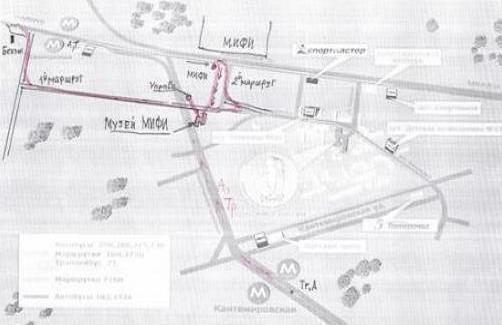 Метро Каширская. Автобус или троллейбус. 1 остановку до МИФИ и далее 80 м до ул. Москворечье, д. 6 (Здесь Поликлиника МИФИ и музей.)
Метро Каширская. Автобус или троллейбус. 1 остановку до МИФИ и далее 80 м до ул. Москворечье, д. 6 (Здесь Поликлиника МИФИ и музей.)
Метро Кантемировская, автобус или троллейбус. До Управы района и 150 м пешком.
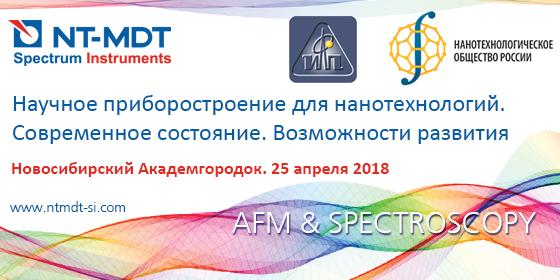 Уважаемые коллеги,
Уважаемые коллеги,
в Новосибирском Академгородке 25 апреля 2018 года с 11-00 до 17-00 на базе Института физики полупроводников имени А.В. Ржанова СО РАН (Новосибирск, пр. академика Лаврентьева, 13) при поддержке Нанотехнологического Общества России, компании NT-MDT Spectrum Instruments и Сибирского Отделения РАН состоится в формате круглого стола семинар по теме: « Научное приборостроение для нанотехнологий. Современное состояние. Возможности развития»
Целью мероприятия является анализ состояния современного научного приборостроения в России и мире, а также обсуждение возможностей его развития. К участию приглашаются представители научных коллективов, а также научно-производственных объединений Сибирского Федерального Округа.
ПРОГРАММА СЕМИНАРА.
25 апреля, актовый зал главного корпуса ИФП им. А.В. Ржанова СО РАН
10:15-10:30 Открытие круглого стола. Пармон В.Н., академик РАН, председатель Сибирского отделения РАН; Латышев А.В., академик РАН, директор ИФП СО РАН.
10:30-11:00 Быков В. А., д.т.н., NT-MDT SI, НОР
«Сканирующая зондовая микроскопия. Актуальные тенденции и перспективы»
11:00-11.30 Поляков В. В., к.т.н., руководитель отдела R&D в NT-MDT SI
«Инфракрасная микроскопия нанометрового пространственного разрешения»
11.30-12.00 Шелаев А. В., к.ф.-м.н., ведущий инженер NT-MDT SI
«Практические приложения спектроскопии комбинационного рассеяния и ближнепольной оптической микроскопии»
12.00-12.20 кофе-брейк
12.20-12.35 Попик В. М., к.ф.-м.н., ИЯФ им. Г. И. Будкера СО РАН
«Статус Новосибирского лазера на свободных электронах»
12.35-12.50 Пельтек С. Е., к.б.н, зам. директора по научной работе, ИЦиГ СО РАН
«Нетермическое воздействие терагерцового излучения на биологические объекты»
13.00-14.00 Обеденный перерыв
14.00-14.20 Милёхин А. Г., д.ф.-м.н., зам.директора по научной работе, ИФП им. А. В. Ржанова СО РАН
«Зондовая спектроскопия комбинационного рассеяния света полупроводниковых наноструктур»
14.20-14.50 Анисимов А.Н., м.н.с., ФТИ им. А. Ф. Иоффе РАН
«Высокочастотные спектрометры ЭПР (ОДМР) нового поколения. Возможности спиновых центров окраски в широкозонных полупроводниках в качестве квантовых сенсоров магнито-резонансной сканирующей спектроскопии»
14.50-15.10 Терещенко О.Е., д.ф.-м.н., и.о. зав. Лаб. №3, ИФП им. А. В. Ржанова СО РАН
«Фотоэмиссионные катоды на базе полупроводников с отрицательным электронным сродством и возможность их адаптации для многолучевых электронных литографов»
15.10-15.30 Выхристюк И.А., зав. лаб. ОИС, КТИ НП СО РАН
«Интерфереционный микроскоп сверхвысокого разрещения с применением атомногладких зеркал»
15.30-15.40 кофе-брейк
15.40-16.00 Круглый стол
Желающие приглашаются обменяться на круглом столе опытом в области анализа материалов, выступить с краткими (около 5 мин) презентациями собственных результатов и разработок. Расширенный список докладов будет объявлен дополнительно не позднее 24 апреля.
Вход свободный.
По вопросам участия: events@ntmdt-si.com
Организаторы.
Сибирское Отделение РАН
ИФП им А.В. Ржанова СО РАН
НОР
NT-MDT S.I.
Организационный комитет:
Академик РАН Латышев Александр Васильевич
д.т.н. Быков Виктор Александрович
д.ф.-м.н. Милёхин Александр Германович
к.т.н. Леесмент Станислав Игоревич
к.ф.-м.н. Каламейцев Александр Владимирович
Sun Towards High Noon: Transforming Our Energy Future
Peter F. Varadi
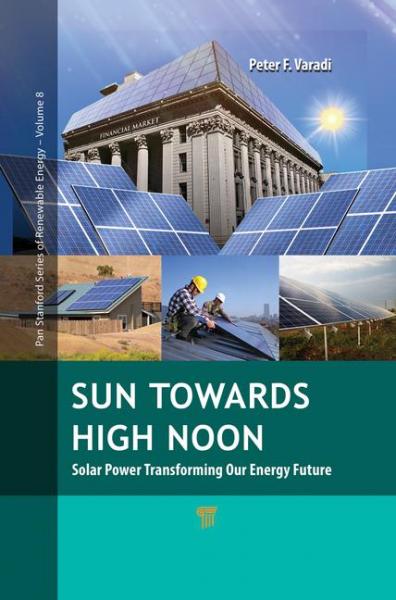 Summary
Summary
The meteoric expansion of the solar (PV) industry resulted from an incredible reduction in the prices of PV systems—first described in the author’s earlier book Sun above the Horizon. It began early in the new century and continued in the following decade with an extraordinary upswing. As a result, by the end of 2016, the worldwide PV operational power capacity grew to some 300 GW. Most of this increased capacity, 250 GW, was installed during the years 2010–2016. Suddenly PV started to affect the traditional generation of electricity and helped reduce carbon emissions and other environmental impacts. This book describes how this happened. Three practically unlimited new PV markets—residential, commercial, and utility scale –materialized, along with the new PV-oriented financial systems needed to provide the required gargantuan-scale capital. This book also highlights the increasing demand for and the corresponding increased supply of PV cells and modules on four continents and the impact of this PV breakthrough on our lives and future. To present this unparalleled story of societal transformation, the author was helped by the contributions of top experts Wolfgang Palz, Michael Eckhart, Allan Hoffman, Paula Mints, Bill Rever, and John Wohlgemuth.
Sun Above the Horizon: Meteoric Rise of the Solar Industry
Peter F. Varadi
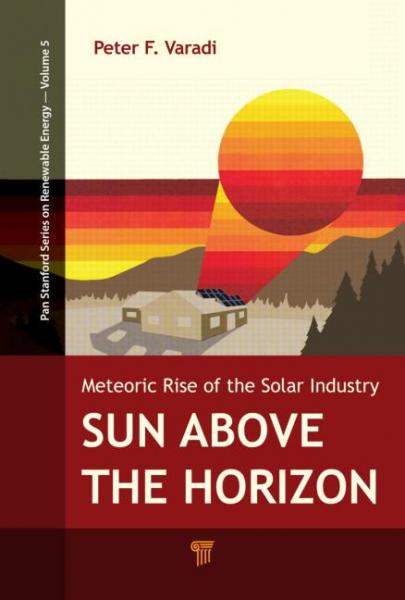 Summary
Summary
The meteoric rise of the photovoltaic (PV) industry is an incredible story. In 2013, Google’s investments in PV systems totaled about half a billion dollars and Warren Buffet, one of the famous investors, invested $2.5 billion in the world’s largest PV system in California. These gigantic investments by major financial players were made only 40 years after the first two terrestrial PV companies, Solarex and Solar Power Corporation, were formed in the USA. Back in 1973, the two companies employed 20 people and produced only 500 watts of PV power. Now, just 40 years later, over a million people work in the PV industry. The worldwide capacity of operating PV electric generators equals the capacity of about 25 nuclear power plants. The PV industry is growing at an annual rate of 30 percent, equivalent to about five new nuclear power plants per year. Today, solar electricity is a significant supplier of electricity needs, to the extent that PV is forcing the restructuring of 100-year-old electric power utilities. This book describes how this happened and what lies ahead for PV power generation.
The U.S. Government and Renewable Energy: A Winding Road
Allan Hoffman
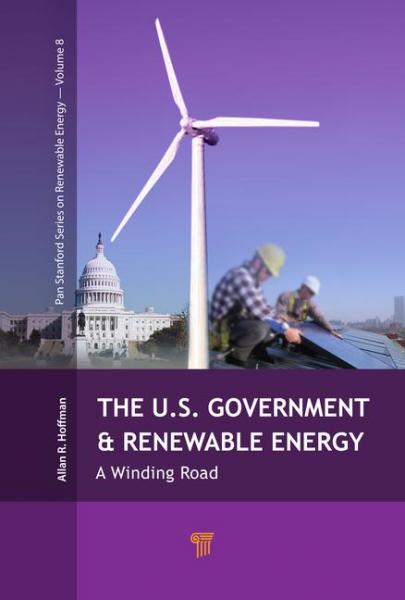 Summary
Summary
This is a book on how the U.S. and other governments have changed their thinking about energy issues over the past four decades, a change triggered by increasing concern about the role of fossil fuels in global warming and climate change, greater awareness of the risks of nuclear power, and the emergence of viable renewable energy sources. It will help understanding of how this change came about in the United States from the unique perspective of a well-placed participant and observer. It will enhance understanding of the global energy transition that is finally getting underway in the second decade of the 21st century at an accelerating, even dizzying, pace. The book’s main purpose is to illustrate how the U.S. government moved along its winding path to where it is today in getting ready for a renewable energy future. Target audiences are the young people who will inherit the transition and shape its future, those in government who currently shape our public policies, and those colleagues, friends, and family members who lived through many of the times and events discussed in the book.
Biomass Power for the World
Wim P. M. van Swaaij, Sascha R. A. Kersten, Wolfgang Palz
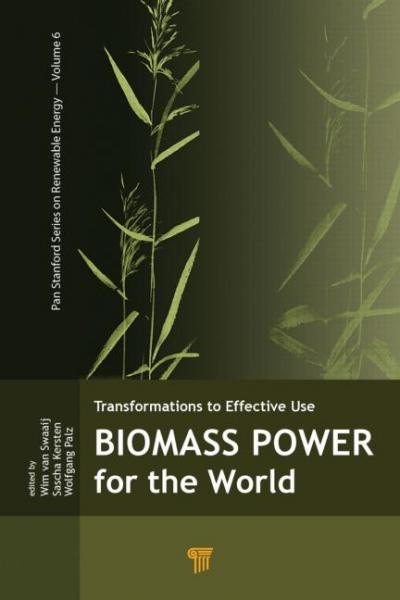 Summary
Summary
Energy from solar radiation, fixated by self-assembling plant structures, creates biomass that is converted to energy carriers fit for application in today’s and tomorrow’s energy-generating equipment. The central theme of this book is the development of the current largest renewable energy source for efficient applications in modern and developing society—biomass. The book is presented in an easy-to-understand manner for non-experts, nevertheless revealing the true challenges of this extremely broad area. Through this book, passionate pioneers and (ex-)EU officials tell the interesting history of the use of biomass by mankind in general and how the future of its modern use was shaped by active support of the European Union. The book mainly emphasizes specific technologies, both biological and thermo-chemical, from simple to extremely complex. Recognized experts explain these technologies in a clear way along with their future prospects. Climb on the shoulders of all 35 authors of the book and look into the close and distant future where interaction with other renewable sources will occur, and discover a renewable energy future in which an important role will be played by the oldest one—bioenergy.
Wind Power for the World: The Rise of Modern Wind Energy
Preben Maegaard, Anna Krenz, Wolfgang Palz
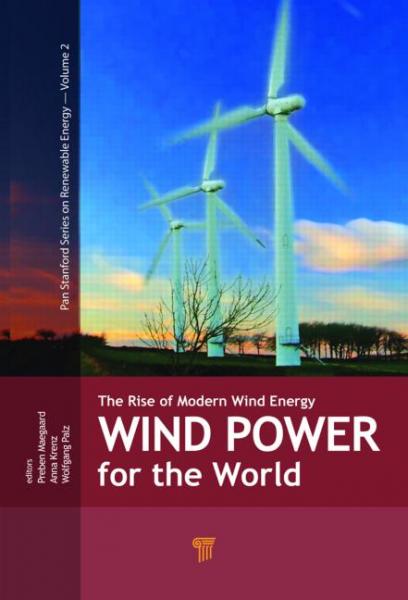 Summary
Summary
This book sheds light on how the modern 3-bladed wind turbine came into being, and who, how and what in the proceeding period caused the success. It looks back over three decades to find the roots of this exciting development, a long cavalcade of developers, inventors, and manufacturers including the Danish authors who themselves were part of the breakthrough. Written for non-specialists, the book covers minimal science, emphasizing the story of how wind power became a worldwide 30-billion-euro business employing nearly one million people.
Wind Power for the World: International Reviews and Developments
Preben Maegaard, Anna Krenz, Wolfgang Palz
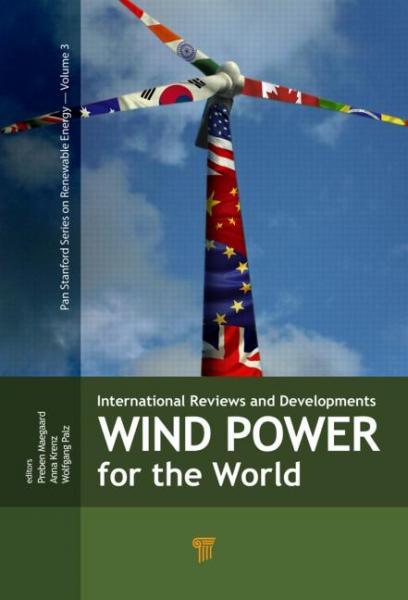 Summary
Summary
In part 2 of Wind Power for the World, the editors have collected reports and overviews of wind power status and history in various countries, several written by individuals who have made valuable contributions to the successful emergence of wind power. The chapters cover the uphill struggle; wind energy strategies and policies that paved the way; and the creative persons in politics, agencies, institutes, and the industry. It also examines the world societies at large and how solutions to the challenges were found in different countries.
Solar Power for the World: What You Wanted to Know about Photovoltaics
Wolfgang Palz
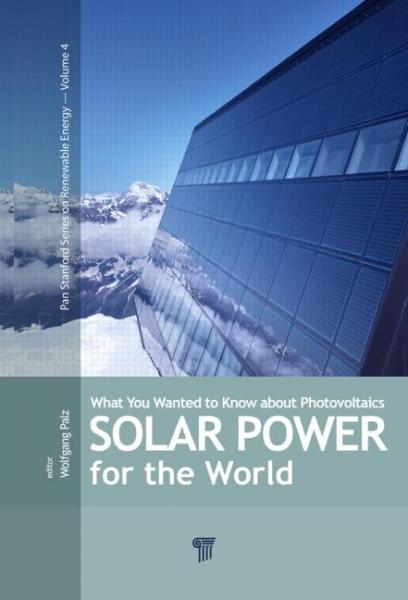 Summary
Summary
The book describes the industrial revolution associated with the implementation of electric power generation by photovoltaics (PV). The book’s editor and contributing authors are among the leading pioneers in PV from its industrial birth in 1954 all the way up to the stormy developments during the first decade of the new century. The book describes the dramatic events in industry between 2009 and 2013 and puts all this into perspective. It concludes that solar power is yet to strengthen its role in technology and in mainstream of the world’s economy.
Nanomedicine in Cancer
Lajos P Balogh
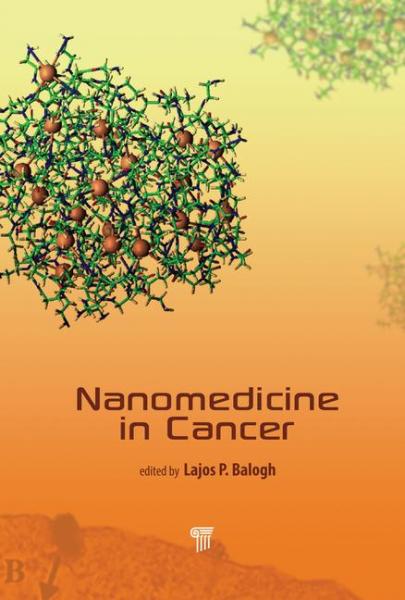
Summary
This book is the first in a series compiling highly cited articles in nanomedicine recently. The series is edited by Lajos P. Balogh, a prominent nanotechnology researcher and journal editor. The first book content is about nanotechnology in cancer research. It also includes a wide variety of must-know topics that will appeal to any researcher involved in nanomedicine, macromolecular science, cancer therapy, and drug delivery research. These 31 articles collected here have already acquired more than 3500 citations (i.e., over a hundred on average), highlighting the importance and recognized professional interest of the scientists working in this field.
Biocatalysis and Nanotechnology
Peter Grunwald
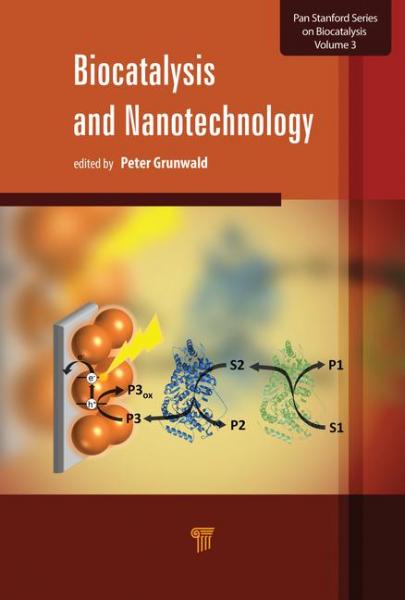
Summary
Nanobiocatalysis has rapidly developed into a subarea of enzyme biotechnology. It combines the advances in nanotechnology that have generated nanoscale materials of different sizes, shapes, and physicochemical properties, and the excellent characteristics of biocatalysts into an innovative technology. This book provides an overview of the various relations between nanotechnology and biocatalysis. It discusses the fabrication and application of nanomaterials for the immobilization of enzymes used in the sustainable production of goods and chemicals. Nanosupports have several advantages compared with bulk solid materials because of their high surface area, which results in a significantly reduced mass transfer limitation and comparatively high enzyme loading. These characteristics are also of great use for applications in the fields of enzymatic biosensors, biofuel cells, bioelectronics, and photoelectrochemical analyte detection, where conductive nanomaterials improve the rate of electron transfer. The book also presents an overview of nanotoxicology and covers nanostructured enzyme catalysis in organic solvents and its potential application for biodiesel production, probing of enzymatic activity, and identification of enzyme functions of inorganic nanoparticles as enzyme mimics.
Immunoassays: Development, Applications and Future Trends
Richard O'Kennedy, Caroline Murphy
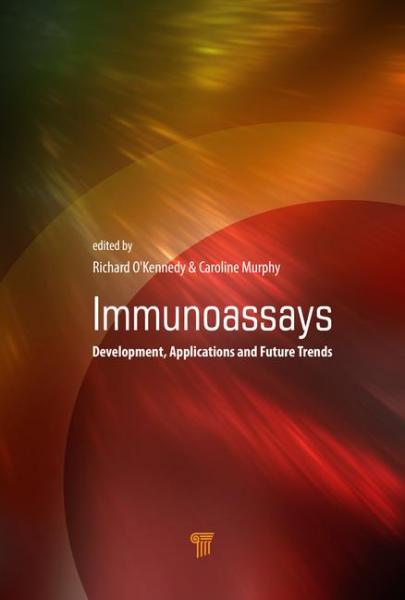
Summary
The concept behind this book is to provide a detailed and practical overview of the development and use of immunoassays in many different areas. Immunoassays are analytical tests that utilise antibodies to measure the amount, activity or identity of an analyte. This book is designed to provide a critical and helpful insight into the subject and to give the user practical information that may be of assistance in assay format selection, antibody generation/selection and choice of appropriate detection strategies. It is comprised of 13 chapters written by highly experienced researchers in the fields of antibody-based research, immunoassay development, assay validation, diagnostics and microfluidics. Beginning with a comprehensive survey of antibodies, immunoassay formats and signalling systems, the book elucidates key topics related to the development of an ideal antibody-based sensor, focuses on the important topic of surface modification, explores key parameters in the immobilisation of antibodies onto solid surfaces, discusses the move to ‘lab-on-a-chip’-based devices and investigates the key parameters necessary for their development. Three of the chapters are dedicated to the areas of clinical diagnostics, infectious disease monitoring and food security, where immunoassay-based applications have become highly valuable tools. The future of immunoassays, including next-generation immunoassays, electrochemical-immunoassays and ‘lab-on-a-chip’-based systems, is also discussed. The book also covers the use of optical detection systems (with a focus on surface plasmon resonance) in immunoassays, provides a compilation of important, routinely used immunoassay protocols and addresses problems that may be encountered during assay development.
Bioinspired Superhydrophobic Surfaces: Advances and Applications with Metallic and Inorganic Materials
Frédéric Guittard, Thierry Darmanin
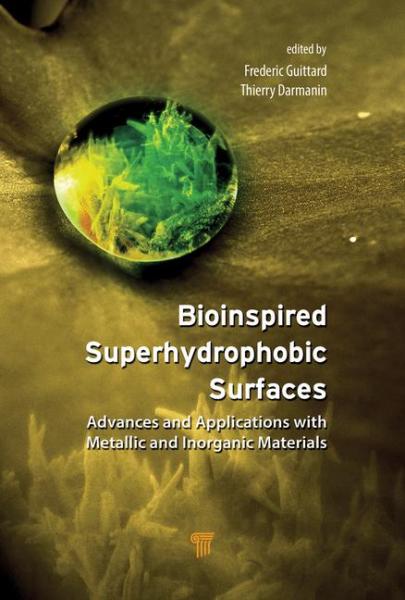
Summary
Materials with superhydrophobic or related properties are one of the most studied subjects from a theoretical point of view and also for the large range of possible applications, for example, anticorrosion, antibacteria, optical devices, and sensors. The study of natural species with special wettability has shown us the importance of surface structures and the surface energy of the resulting surface properties. Various strategies can be used to reproduce superhydrophobic phenomena in the laboratory. General reviews on superhydrophobic properties already exist but, to our knowledge, do not focus on metallic and inorganic materials. Here, we focus especially on the strategies implemented for reaching superhydrophobic or related properties using metallic and inorganic materials. Indeed, these materials present unique properties, for example, thermal and mechanical resistance, chemical and ageing resistance, and optical (transparency, antireflection, photoluminescence) and electrical properties (conducting, semiconducting, insulating). This book will be useful for graduate students of materials chemistry and physics and for researchers in surface science, nanostructures, and bioinspired or biomimetic materials.
Tuning Innovation with Biotechnology
Dong Hwa Kim
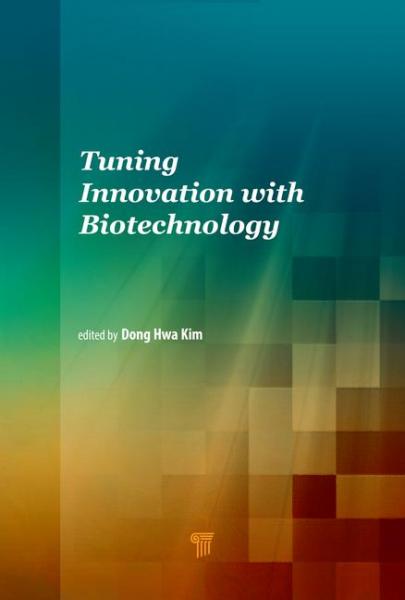
Summary
This book deals with evolving intelligence systems and their use in immune algorithm (IM), particle swarm optimization (PSO), bacterial foraging (BF), and hybrid intelligent system to improve plants, robots, etc. It discusses the motivation behind research on and background of evolving intelligence systems and illustrates IM-based approach for parameter estimation required for designing an intelligent system. It approaches optimal intelligent tuning using a hybrid genetic algorithm–particle swarm optimization (GA-PSO) and illustrates hybrid GA-PSO for intelligent tuning of vector system.
Dendrimers in Nanomedicine
Delphine Felder-Flesch
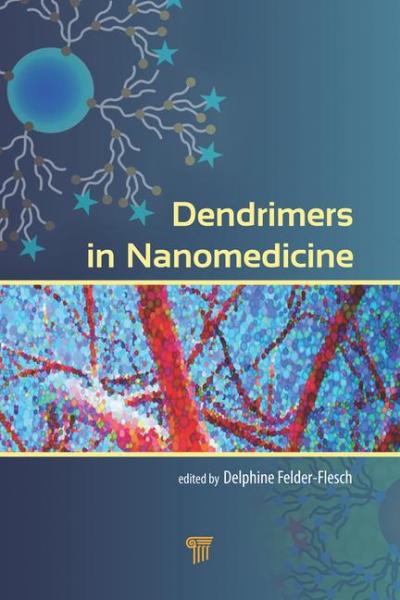
Summary
Nanomedicine can take advantage of the recent developments in nanobiotechnology research for the creation of platforms with superior drug carrier capabilities, selective responsiveness to the environment, unique contrast enhancement profiles, and improved accumulation at the disease site. This book provides a broad glimpse of how various dendritic nanomaterials have been designed and used as efficient tools for nanomedicine. It comprises a pedagogic introduction to dendrimers and hyperbranched systems and their classical and accelerated syntheses through cutting-edge methodologies. The chapters on dendronized magnetic nanoparticles as theranostics, dendrimers in theory (molecular simulations), siRNA delivery with dendrimers, and dendrimers for image-guided therapy, combined with chapters focused on specific types of dendrimers or hyperbranched structures, detail the cutting-edge research in nanomedicine. Finally, a detailed chapter on issues related to the pharmacokinetics and biodistribution of dendrimers helps choose the right structures for successful transfer from bench to bedside. This book will appeal to those involved in nanobiotechnology, macromolecular science, cancer therapy, tissue repair, and siRNA delivery research.
3 апреля 2018 года состоится научный вебинар для школьников в рамках IX Ежегодной конференции НОР. Школьные доклады можно будет предоставить в рамках совместной онлайн конференции НОР и биологического отделения сети детских технопарков Кванториум.
Для участия необходимо прислать на почту секретариата НОР (orgnanosociety@mail.ru) файл с презентацией доклада (выступление не более 10 минут), форматы .ppt, .pptx, .pdf. В ответ будет выслана ссылка для регистрации на платформе вебинаров Кванториум, на которой и будет проходить конференция.
Квалификация участников – с 5 по 11 класс средней школы. По результатам участникам будут выданы дипломы сети Кванториум, лучшим докладчикам будет предоставлена возможность опубликовать статью о своем исследовании в журнале НОР «НБИКС–Наука.Технологии».
Для участия в вебинаре необходимо иметь компьютер с видеокамерой и микрофон с наушниками. Ведущий вебинара – кандидат биологических наук, Андреюк Денис Сергеевич, исполнительный вице-президент Нанотехнологического общества России.
22 марта в 16-00 в офисе Общероссийской общественной организации «Российская ассоциация содействия науке» по адресу: Москва, 1-й Пехотный переулок, д. 6, кор. 2, 2-й этаж – состоится очередной научный семинар НОР-МИФИ.
На семинаре будет представлен доклад « Неинвазивная диагностика заболеваний». Докладчик Юлия Шалтаева, аспирант НИЯУ МИФИ.
На семинар НОР-МИФИ приглашаются все заинтересованные лица. Вход свободный.
Схема проезда:
http://www.rusnor.org/upload/My/2018/RASN/RASN.pdf
http://www.rusnor.org/upload/My/2018/RASN/RASN.docx
Нанотехнологическое общество России приглашает всех заинтересованных лиц к участию в издании электронного журнала «НБИКС-Технологии».
 Обращение инициативной группы по созданию электронного журнала «НБИКС-Технологии».
НБИКС-Технологии
Обращение инициативной группы по созданию электронного журнала «НБИКС-Технологии».
НБИКС-Технологии являются научно-технологическим, конвергентным ядром развития цивилизации в XXI веке, 6-го технологического уклада 4-ой промышленной революции. На наших глазах происходит глубокое взаимное проникновение этих технологий во все сферы деятельности современного человека: научные, технические, социо-гуманитарные. Это приводит к беспрецедентной в предыдущей истории скорости научно-технического «прогресса» (правильнее сказать – развития) за счет конвергенции и эффекта синергии. Одновременно проявляется технологическая и социально-гуманитарная неопределенность (сингулярность). Всё вместе это должно вызывать большие надежды и тревогу о рисках, волнения за будущее человечества и нашей страны.
К сожалению, эти проблемы не стали объектами достаточного внимания ни национальных правительств, ни международных организаций (ООН, ЮНЕСКО), ни научно-технического экспертного сообщества. На этих проблемах научно-технологического, гуманитарного характера, возникающих у нас на глазах и предполагается сосредоточиться в организуемом журнале «НБИКС-технологии».
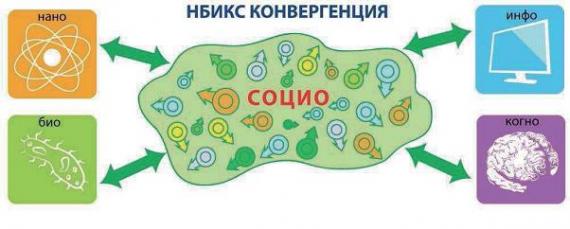
Следует отметить что в мире существует множество журналов по каждой науке и технологии, входящей в комплекс НБИКС, но нет ни одного журнала, в котором бы обсуждались конвергентность их совместного проникновения и влияния и что можно ожидать на выходе этого всего. Такой журнал мы собираемся создать и создадим. Но сначала надо сформировать команду единомышленников из разных областей знаний и практик.
Дорогие коллеги, приглашаем Вас в нашу инициативную группу. Предлагаем Вам высказаться на нашем портале о данном проекте и дать свои предложения.
По вопросам участия в проекте обращаться:
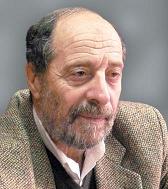
Вице-президент НОР профессор
Герман Кричевский gek20003@gmail.com
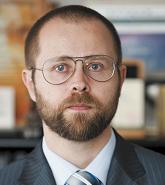
Исполнительный вице-президент НОР
Денис Андреюк denis.s.andreyuk@yandex.ru

Редактор портала НОР
Валерий Гумаров aguma@rambler.ru
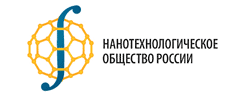
Секретариат НОР orgnanosociety@mail.ru
Концепция издания электронного журнала «НБИКС-Технологии».
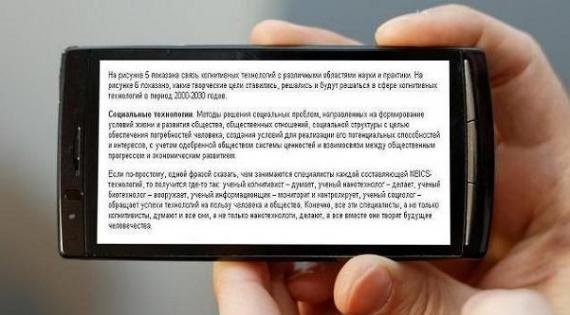
1. Журнал «НБИКС-Наука.Технологии» является общественно-научным, т.е. публикует материалы, ценные для науки и/или интересные для общества. Тематика научных публикаций определяется названием «НБИКС/NBICS», высокий приоритет имеют статьи междисциплинарного и мультидисциплинарного характера.
2. Журнал издается в электронном виде, выходит 4 раза в год. Опубликованные материалы доступны для всеобщего прочтения бесплатно.
3. Для организации работы журнала создается редакция. Статьи принимаются к публикации только в случае получения положительной рецензии. Рецензентами выступают высококвалифицированные специалисты в профильных дисциплинах.
4. В журнале должно быть два постоянных блока:
- научные публикации;
- общественная дискуссия;
а также ряд рубрик, которые могут появляться и исчезать для удобства работы.
Миссия:
- статьи должны читать, они должны быть доступны и бесплатны;
- информационные ресурсы НОР должны работать на повышение рейтинга его членов, мы вложим наши ресурсы в раскрутку публикаций;
- публикации должны быть вычитаны, отредактированы и должны соответствовать общепринятым нормам научной логики - для этого рецензирование и работа редакторов;
- мы понимаем, что есть формальная система индексов и мы будем стараться в них войти, но, если будет слишком сложно/долго/дорого - будем работать для читателей.

18 января в 16-00 в офисе Общероссийской общественной организации «Российская ассоциация содействия науке» по адресу: Москва, 1-й Пехотный переулок, д. 6, кор. 2, 2-й этаж – состоится очередной научный семинар НОР–МИФИ.
На семинаре будет сделан доклад « О создании научно-производственного нанотехнологического консорциума», где будет представлен проект « Агронаноиндустрия – высокоэффективные технологии экологического агробизнеса». Докладчик – вице-президент Нанотехнологического общества России по экономическим и финансовым вопросам, вице-президент ОАО «Газпромбанк» Борис Петрович Павлов.
Краткое содержание инновационного проекта «Агронаноиндустрия – высокоэффективные технологии экологического агробизнеса»
На семинар НОР-МИФИ приглашаются все заинтересованные лица. Вход свободный.
Подробное описание схемы проезда



Каждый год, 10 ноября, весь цивилизованный мир отмечает Всемирный день науки во имя мира и развития или по-простому День Науки – праздничную дату, учрежденную ЮНЕСКО в 2001 году. К этой дате приурочиваются дни открытых дверей в учебных заведениях, экскурсии в технические музеи, посещение выставок научной тематики, проведение научных семинаров различных уровней.

Нанотехнологическое общество России по случаю Дня Науки предлагает вниманию посетителей портала НОР подборку научно-популярной литературы от интернет-магазина OZON.ru
Для ценителей физики
 Для любителей астрономии
Для любителей астрономии
 Для почитателей математики
Для почитателей математики
 В этом мире случайностей мы ищем закономерности и, как ни странно, иногда их находим. Поиск этот называется наукой.
В этом мире случайностей мы ищем закономерности и, как ни странно, иногда их находим. Поиск этот называется наукой.
  Fall Savings on Bestselling Titles 35% OFF across ALL subjects!
Fall Savings on Bestselling Titles 35% OFF across ALL subjects!

Don’t miss this chance to get 35% off all bestselling titles with a minimum purchase of 2 books.
Apply the discount code WSBEST35 during checkout.
Valid till 1 Nov 2017 only!
Terms & Conditions
1. This discount/promotion is only available to individuals purchasing directly from www.worldscientific.com and not available to libraries and booksellers.
2. Multi-volume sets and Chinese publication are excluded from this discount/promotion.
3. Prices are subject to change without prior notice.
4. Promotion is valid while stocks last. Delivery for print books may be delayed up to 2 months due to high demand.
5. S$ price is valid for Singapore only

The Winner of the Award RUSNANOPRIZE 2017 Was the Creator of High-efficiency Solar Cells Michael Grätzel. The RUSNANOPRIZE award was established in 2009 and is awarded annually for the best nanotechnology developments implemented in mass production in one of four directions: “Nanomaterials and Surface Modification”, “Medicine, Pharmacology and Biotechnology”, “Optics and Electronics”, “Energy Efficiency and Green Technologies”. The award can be received by a group of scientists (no more than three people) and a company that commercialized their development. The laureates are chosen by the International Committee, which includes scientists and business representatives who have achieved outstanding results in the field in which the award is presented this year. In 2017, the prize is awarded for developments in the field of nanomaterials and surface modification.
The RUSNANOPRIZE 2017 international award committee decided to award the prize to Michael Grätzel, professor of physical chemistry and head of the photonics laboratory and interfaces of the Institute of Chemical Sciences and Chemical Engineering at the Federal Polytechnic School of Lausanne. He is among the ten most cited chemists in the world: his Hirsch index is 228, and the number of citations exceeds 260,000.
“Today the whole world is intensively searching for new methods and materials that can improve the efficiency of solar energy. It is important that the solar cells, which his work helped create, can solve both strategic and everyday tasks: from the creation of high-performance power plants to recharging mobile devices. The development of today’s laureate is the so-called perovskite technologies, the next generation of materials for solar cells. But there are also ‘Grätzel cells’, named after the author. They, for example, are used in solar panels that can be built in and fit organically into modern residential buildings. Both perovskite technologies and the ‘Grätzel cells’ are now leaving laboratories and becoming part of the industry. It is obvious that it is these technologies that the future of solar energy is connected with,” said Anatoly Chubais, Chairman of the Board of Management Company RUSNANO, in the award ceremony.
Grätzel in the early 1990s created dye-sensitized solar cells, which are now known as “Grätzel cells”. Their use allowed to increase the efficiency of solar cells from 3-8% to 22.1%. It was for this development that he was awarded the prize.
Today the name of Michael Grätzel is associated with a new direction in solar energy, which he headed - perovskite photovoltaics. It opened fundamentally new approaches to the creation of solar cells, which allows to significantly increase their efficiency and accordingly reduce their cost, which, in the end, creates a growing new global market, complementing the segment of silicon solar cells.
The scientific group of Professor Michael Grätzel owns several records in the field of creating perovskite solar cells, which revolutionized the field of photovoltaics, achieving efficiency of 22%. Such efficiencies currently exceed the efficiency values of silicon analogues, and their industrial production is planned to commence already in the very near future.
The prize was also awarded to Exeger, a company engaged in the commercialization of Grätzel’s products.
The organizer of the RUSNANOPRIZE award is the Fund for Infrastructure and Educational Programs (RUSNANO Group). The monetary part of the Prize is 3 mln roubles. The scientist, the author of the development, receives the monetary part of the Prize, the award symbol and the honorary diploma of the laureate. The company, which applied the development in mass production and achieved commercial success through its implementation, is awarded the honorary diploma and the award symbol.
The Fund for Infrastructure and Educational Programs (FIEP) was established in 2010 in accordance with federal law № 211-FZ On Reorganization of the Russian Corporation of Nanotechnologies. Its purpose is to develop innovative infrastructure for nanotechnology, including realizing educational programs and infrastructure projects earlier begun by RUSNANO.
The chairman of the Supervisory Council, the fund’s highest governing body, is Dmitry Livanov, minister of education and science of the Russian Federation. As stipulated in the charter of the fund, the council determines the priority areas of the fund’s endeavors, sets its strategies, and establishes its budget. Anatoly Chubais, RUSNANO CEO, is chairman of the Management Committee. The fund’s CEO is Andrey Svinarenko.
* * *
The RUSNANOPRIZE was established in 2009 by Russian Nanotechnologies Corporation, which is one of the world’s largest investment companies in the innovation industry. The prize is awarded to both Russian and foreign nationals. Four of the eight winners in the five-year history of the award have been foreign designers.
The RUSNANOPRIZE aims to promote:
• integration of the needs of business with the interests of the scientific community;
• broader public awareness of developments and practical applications in the field of nanotechnology;
• the encouragement of experimental and applied research and development in nanotechnology and their use in industry;
• international cooperation in this field;
• public recognition of the role of the individual scientists, developers and teams that carry out scientific research.
Уважаемые коллеги!
Приглашаем Вас принять участие в Международной конференции со школой и мастер-классами для молодых ученых « Химическая технология функциональных наноматериалов».
Конференция состоится 30 ноября-1 декабря 2017 года в РХТУ им. Д.И. Менделеева по адресу: г. Москва, ул. Героев Панфиловцев, 20 (Тушинский комплекс).
Тематика конференции:
- Физико-химические свойства наноматериалов
- Фундаментальные проблемы получения функциональных наноматериалов,
- Современные методы исследования функциональных наноматериалов,
- Применение функциональных наноматериалов.
Регистрация участников конференции.
Регистрация участников с тезисами докладов проводится до 15 октября 2017 года на сайте конференции. Тезисы принимаются по e-mail: nanomaterial2017@list.ru до 5 ноября включительно. Возможно заочное участие.
Организационный взнос не предусмотрен. По материалам конференции будет издан сборник тезисов докладов, индексируемый в РИНЦ.
Контактная информация:
Сайт конференции: http://nano.muctr.ru/conf/ctfnm_2017
Электронная почта: nanomaterial2017@list.ru
Телефоны для справок:
+7 (495) 495-21-16 – кафедра наноматериалов и нанотехнологии
+7 (962) 997-95-14 – Каракатенко Елена Юрьевна, ответственный секретарь конференции
Информационное сообщение
Правила оформления тезисов
Пример оформления тезисов
 Introduction to Nanoelectronic Singe-Electron Circuit Design, Second Edition
Jaap Hoekstra
348 Pages, 154 B/W Illustrations
Introduction to Nanoelectronic Singe-Electron Circuit Design, Second Edition
Jaap Hoekstra
348 Pages, 154 B/W Illustrations
 Summary
Summary
Today, the concepts of single-electron tunneling (SET) are used to understand and model single-atom and single-molecule nanoelectronics. The characteristics of nanoelectronic devices, especially SET transistors, can be understood on the basis of the physics of nanoelectronic devices and circuit models. A circuit theory approach is necessary for considering possible integration with current microelectronic circuitry. To explain the properties and possibilities of SET devices, this book follows an approach to modeling these devices using electronic circuit theory. All models and equivalent circuits are derived from the first principles of circuit theory. Based on energy conservation, the circuit model of SET is an impulsive current source, and modeling distinguishes between bounded and unbounded currents. The Coulomb blockade is explained as a property of a single junction. In addition, this edition differs from the previous one by elaborating on the section on spice simulations and providing a spice simulation on the SET electron box circuit, including the spice netlist. Also, a complete, new proof of the two-capacitor problem in circuit theory is presented; the importance of this proof in understanding energy conservation in SET circuits cannot be underestimated. This book will be very useful for advanced undergraduate- and graduate-level students of electrical engineering and nanoelectronics and researchers in nanotechnology, nanoelectronic device physics, and computer science.
Only book modeling both single-electron tunneling and many electron tunneling from the points of view of electronics; starting from experiments, via a physics description, working towards a circuit description; and based on energy conservation, in electrical circuits, developing the impulse circuit model for single-electron tunneling.
Josephson Junctions: History, Devices, and Applications
Edward L. Wolf, Gerald B. Arnold, Michael A. Gurvitch, John F. Zasadzinski
410 Pages, 15 Color & 106 B/W Illustrations
 Features
Features
The book is authoritative, starting with a chapter by Dr. Josephson, a Nobelist.
It is the only complete summary of the physics and fabrication methods of the several forms of Josephson junctions.
It is the only complete summary of applications of Josephson junctions, including those in medicine, astronomy, computing, and metrology.
The book is completely up to date, described by internationally recognized experts.
Summary
This book summarizes the history and present status and applications of Josephson junctions. These devices are leading elements in superconducting electronics and provide state-of-the-art performance in detection of small magnetic fields and currents, in several digital computing methods, and in medical diagnostic devices and now provide voltage standards used worldwide. Astronomical infrared (IR) telescopes, including the South Pole Telescope, use these junctions in combinations called superconducting quantum interference devices (SQUIDs).
Nanostructured Semiconductors: Amorphization and Thermal Properties
Konstantinos Termentzidis
574 Pages, 44 Color & 172 B/W Illustrations
 Summary
Summary
The book is devoted to nanostructures and nanostructured materials containing both amorphous and crystalline phases with a particular focus on their thermal properties. It is the first time that theoreticians and experimentalists from different domains gathered to treat this subject. It contains two distinct parts; the first combines theory and simulations methods with specific examples, while the second part discusses methods to fabricate nanomaterials with crystalline and amorphous phases and experimental techniques to measure the thermal conductivity of such materials.
Physical insights are given in the first part of the book, related with the existing theoretical models and the state of art simulations methods (molecular dynamics, ab-initio simulations, kinetic theory of gases). In the second part, engineering advances in the nanofabrication of crystalline/amorphous heterostructures (heavy ion irradiation, electrochemical etching, aging/recrystallization, ball milling, PVD, laser crystallization and magnetron sputtering) and adequate experimental measurement methods are analyzed (Scanning Thermal Microscopy, Raman, thermal wave methods and x-rays neutrons spectroscopy).
The Difference Electron Nanoscope: Methods and Applications
Werner Lottermoser
254 Pages, 33 Color & 85 B/W Illustrations
 Features
Features
This book deals with the difference electron nanoscope (DEN), whose principles have been invented and realised by the book author. DEN is a software program that displays 3D difference electron hyperareas floating in space and the relevant efg as a wire frame model within the unit cell of the sample involved. For the first time, diffractometry and spectroscopy have been joined to common synergetic effects that may contribute to a better understanding of electric and magnetic interactions in a crystal. The monograph contribute to a wide distribution of the method in the scientific world.
Summary
This book deals with the difference electron nanoscope (DEN), whose principles have been invented and realised by the book author. The DEN is based on a smart combination of diffractometric and spectroscopic data and uses a visualisation of three-dimensional difference electron densities (in our case stemming from 3d orbitals) in order to obtain the key quantity involved, the electric field gradient (efg). However, the DEN is no machine, as the title of the book might infer. It is a computer program running on a fast computer system displaying 3D difference electron hyperareas floating in space and the relevant efg as a wire frame model within the unit cell of the sample involved. In this sense, it acts on a sub-nanometer scale (hence the term "nanoscope") and generates images of uncompared symmetrical and physical evidence—and beauty.
For the first time, diffractometry and spectroscopy have been integrated for the common synergetic effects that may contribute to a better understanding of electric and magnetic interactions in a crystal. The experimental derivation of the common quantity, the efg, is not confined to iron-containing samples, as the use of Mössbauer spectroscopy might infer, but can also be determined by nuclear quadrupole resonance that is not confined to special nuclides. Hence, the DEN can be applied to a huge multitude of scientifically interesting specimens since the main method involved, diffractometry in a wide sense, has no general limitations at all. So it is a rather universal method, and the monograph might contribute to a wide distribution of the method in the scientific world. Has anyone seen a real orbital before: a real orbital distribution in a crystal unit cell together with its efg tensor ellipsoid? In this book, one can see it.
Tuning Semiconducting and Metallic Quantum Dots: Spectroscopy and Dynamics
Christian von Borczyskowski, Eduard Zenkevich
406 Pages, 32 Color & 129 B/W Illustrations
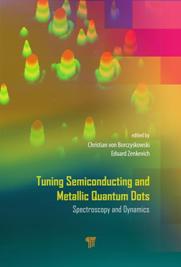 Features
Features
Discusses in introductory chapters the optical features and detection of single quantum dots, dynamics of quantum dot–dye nanoaggregates via self-assembly, quantum dot applications, and lithographic preparation of optical nanostructures
Combines scholarly presentation and comprehensive review
Features case studies from the authors’ research, including unpublished results that broaden the understanding
Presents content that appeals to undergraduates, researchers, and industry professionals in the field of optical nanoscience, material science, and nanotechnology
Summary
Nanotechnology is one of the growing areas of this century, also opening new horizons for tuning optical properties. This book introduces basic tuning schemes, including those on a single quantum object level, with an emphasis on surface and interface manipulation of semiconducting and metallic quantum dots. There are two opposing demands in current forefront applications of quantum dots as optical labels, namely high luminescence stability (suppression of luminescence intermittency) and controllable intermittency and bleaching on a single-particle level to facilitate super-resolution optical microscopy (for which Eric Betzig, Stefan W. Hell, and William E. Moerner were awarded the 2014 Nobel Prize in Chemistry). The book discusses these contradictory demands with respect to both an understanding of the basic processes and applications. The chapters are a combination of scholarly presentation and comprehensive review and include case studies from the authors’ research, including unpublished results. Special emphasis is on a detailed understanding of spectroscopic and dynamic properties of semiconducting quantum dots. The book is suitable for senior undergraduates and researchers in the fields of optical nanoscience, materials science, and nanotechnology.
Plasmonic Resonators: Fundamentals, Advanves, and Applications
Masanobu Iwanaga
324 Pages, 63 Color & 69 B/W Illustrations
 Features
Features
Provides concise and informative descriptions of the basics of plasmon-related studies
Provides a theoretical (classical and quantum mechanical) framework of excited physics, which is usually not well described
Provides a systematic description of the possible kinds of plasmonic resonators (or structures), together with highly visible graphics. In most books, plasmonic resonators are limited to a portion (e.g., nanoparticles) and are not described systematically. A unique plasmon coming from heteroplasmon coupling is also included.
Extensively addresses diverse applications of plasmonic resonators without omitting some of them
Reviews future prospects for the readers’ benefit
Summary
Plasmonic resonators, composed of metallic micro- and nanostructures, belong to the category of excited-state physics on resonances from gigahertz to petahertz. Dynamical physics is in contrast to ground-state physics, which includes thermal states, and is connected to diverse applications to enhance existing photo-induced effects and phenomena such as plasmon-enhanced photoluminescence and Raman scattering. This book has three main aims: to provide fundamental knowledge on plasmonic resonators, to explain diverse plasmonic resonators, and to stimulate further development in plasmonic resonators.
Plasmon-related studies, which are sometimes called plasmonics and include a substantial portion of metamaterials, have shown significant development since the 1980s. The piled-up results are too numerous to study from the beginning, but this book summarizes those results, including the history (past), all the possible types of plasmonic resonators (present), and their wide range of applications (future). It provides the basics of plasmons and resonant physics for undergraduate students, the systematic knowledge on plasmonic resonators for graduate students, and cutting-edge and in-depth information on plasmon-enhancement studies for researchers who are not experts in plasmonics and metamaterials, thereby benefitting a wide range of readers who are interested in the nanotechnology involving metallic nanostructures.
 
In 2017, World Scientific has achieved a publishing milestone. To celebrate the occasion, all journals will be freely accessible for the month of October.
 Check out our Materials Science and Nanoscience Journals now!
Check out our Materials Science and Nanoscience Journals now!
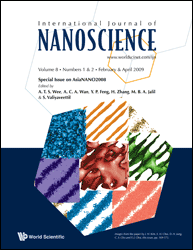
International Journal of Nanoscience
Indexed in Web of Science & Scopus
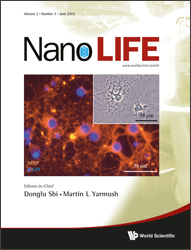 Nano LIFE
Nano LIFE
Indexed in Web of Science
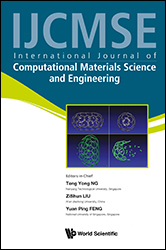 International Journal of Computational Materials Science and Engineering
International Journal of Computational Materials Science and Engineering
Indexed in Web of Science
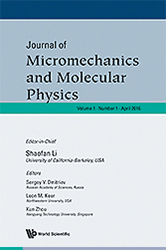 Journal of Micromechanics and Molecular Physics
Journal of Micromechanics and Molecular Physics
Launched in 2016
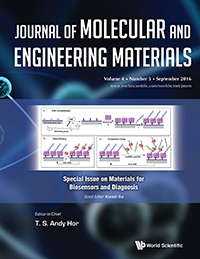 Journal of Molecular and Engineering Materials
Journal of Molecular and Engineering Materials
Indexed in Web of Science
19 октября в Актовом зале Музея НИЯУ МИФИ по адресу: Москва, ул. Москворечье, д.6 (Музей МИФИ) в 16-00 состоится очередной научный семинар НОР–МИФИ.
На семинаре будет представлен доклад « Альфа-излучение и методы его регистрации». Докладчик Андрей Борисович Симаков.
На семинар НОР-МИФИ приглашаются все заинтересованные лица. Вход свободный.
Проезд к Музею НИЯУ МИФИ:
1) Метро Каширская. Автобус или троллейбус. Одна остановка до МИФИ и далее 80 м до ул. Москворечье, д. 6 (Здесь Поликлиника МИФИ и музей.)
2) Метро Кантемировская, автобус или троллейбус. До Управы района и 150 м пешком.
Crystal Chemistry
From Basics to Tools for Materials Creation
By (author): Gérard Ferey (University of Versailles, France)

Devoted to a diverse group of solid state scientists, the book has two objectives, both relating to structural chemistry: (i) a progressive analytic familiarization with the main parameters that govern the organization of crystallized matter and related crystal structures, (ii) a study of what are the various ways to 'read' a structure far beyond its representation in scientific articles. Hence, the reader will, from numerous examples illustrated in color, analyze what are the main characteristics of these structures, from their geometric characteristics, their coordination polyhedra, their connections with the resulting dimensionalities of these solids, including also the defects they exhibit, before looking at possibilities to classify structures, within which recurrence laws can emerge.
Chemists are required to understand the potentials of a new structure for becoming future materials scientists. The first part of the book is by no means a database for known structures, but facilitates a progressive understanding of the organization of the solid state. With these tools in hand, the reader is invited in the later part of the book to analyze new structures, and to also use new concepts for viewing structures in a more synthetic way for the future. Such new vision is already leading to the creation of completely new solids with outstanding characteristics that find applications in societal problems concerning energy, energy savings, environment and health.
The content is not exclusively academic but relates to the creation of innovative materials, through a more physical approach, that might condition the future of materials.
Handbook of Solid State Batteries
Edited by: Nancy J Dudney (Oak Ridge National Laboratory, USA), William C West (Nagoya University, Japan), Jagjit Nanda (Oak Ridge National Laboratory, USA)

Solid-state batteries hold the promise of providing energy storage with high volumetric and gravimetric energy densities at high power densities, yet with far less safety issues relative to those associated with conventional liquid or gel-based lithium-ion batteries. Solid-state batteries are envisioned to be useful for a broad spectrum of energy storage applications, including powering automobiles and portable electronic devices, as well as stationary storage and load-leveling of renewably generated energy.
This comprehensive handbook covers a wide range of topics related to solid-state batteries, including advanced enabling characterization techniques, fundamentals of solid-state systems, novel solid electrolyte systems, interfaces, cell-level studies, and three-dimensional architectures. It is directed at physicists, chemists, materials scientists, electrochemists, electrical engineers, battery technologists, and evaluators of present and future generations of power sources. This handbook serves as a reference text providing state-of-the-art reviews on solid-state battery technologies, as well as providing insights into likely future developments in the field. It is extensively annotated with comprehensive references useful to the student and practitioners in the field.
Scanning Transmission Electron Microscopy of Nanomaterials
Basics of Imaging and Analysis
Edited by: Nobuo Tanaka (Nagoya University, Japan)

The basics, present status and future prospects of high-resolution scanning transmission electron microscopy (STEM) are described in the form of a textbook for advanced undergraduates and graduate students. This volume covers recent achievements in the field of STEM obtained with advanced technologies such as spherical aberration correction, monochromator, high-sensitivity electron energy loss spectroscopy and the software of image mapping. The future prospects chapter also deals with z-slice imaging and confocal STEM for 3D analysis of nanostructured materials.
Optical Properties of Graphene
Edited by: Rolf Binder (University of Arizona, USA)

This book provides a comprehensive state-of-the-art overview of the optical properties of graphene. During the past decade, graphene, the most ideal and thinnest of all two-dimensional materials, has become one of the most widely studied materials. Its unique properties hold great promise to revolutionize many electronic, optical and opto-electronic devices. The book contains an introductory tutorial and 13 chapters written by experts in areas ranging from fundamental quantum mechanical properties to opto-electronic device applications of graphene.
Thin Films on Silicon
Electronic and Photonic Applications
Edited by: Vijay Narayanan (IBM Thomas J Watson Research Center, USA), Martin M Frank (IBM Thomas J Watson Research Center, USA), Alexander A Demkov (The University of Texas at Austin, USA)

This volume provides a broad overview of the fundamental materials science of thin films that use silicon as an active substrate or passive template, with an emphasis on opportunities and challenges for practical applications in electronics and photonics. It covers three materials classes on silicon: Semiconductors such as undoped and doped Si and SiGe, SiC, GaN, and III-V arsenides and phosphides; dielectrics including silicon nitride and high-k, low-k, and electro-optically active oxides; and metals, in particular silicide alloys. The impact of film growth and integration on physical, electrical, and optical properties, and ultimately device performance, is highlighted.
Materials Concepts for Solar Cells
By (author): Thomas Dittrich (Helmholtz Center Berlin for Materials and Energy, Germany)

This textbook bridges the gap between basic literature on the physics of solar cells and highly specialized books about photovoltaic solar energy conversion. It is intended to give students with a background in engineering, materials science, chemistry or physics a comprehensive introduction to materials concepts for solar cells. To this end, general principles of solar cells and materials demands are explained in the first part of this book. The second part is devoted to the four classes of materials concepts for solar cells: solar cells based on crystals of silicon, epitaxial layer systems of III-V semiconductors, thin-film absorbers on foreign substrates, and nano-composite absorbers.
Introduction to Nanoscience and Nanomaterials
By (author): Dinesh C Agrawal (Indian Institute of Technology, India)

This textbook is aimed primarily at the senior undergraduate and first year graduate students from the various engineering and sciences departments including physics, chemistry, materials engineering, chemical engineering, electrical engineering, mechanical engineering, bioengineering, and biology. Researchers in the areas of nanomaterials and nanoscience will also find the book useful for building the background necessary to understand the current literature and as a reference book. The text assumes only a basic level of competency in physics, chemistry and mathematics. Some of the background material and introductory matter are included in the first few chapters and as appendices. Although this material may be familiar to some of the students, it is the author's experience after teaching such a course for many years that this can not be taken for granted and moreover, serves as a ready reference to understand the text.
As the area of nanoscience, nanotechnology and nanomaterials is a fast developing one, an approach which equips the students to comprehend the developing field rather than providing a large volume of information is essential. With this in view, while providing a broad perspective, the book emphasizes basics of nanoscience and nanoscale materials and goes into sufficient depth for the reader to be able to handle numerical problems. The treatment is kept at a level which is easily comprehensible to an undergraduate student. Solved examples are provided in each chapter to aid understanding and a set of problems is given at the end of each chapter.
Nanomaterials for Photocatalytic Chemistry
Edited by: Yugang Sun (Temple University, USA)

This book concentrates on the emerging area of the utilization of (solar) photon energy for catalyzing useful chemical reactions (also called artificial photosynthesis) including water splitting, CO2 reduction, selective epoxidation, selective alcohol oxidation, coupling reactions, etc. The chapters in this book cover topics ranging from materials design at nanometer scale to nanomaterials synthesis to photocatalytically chemical conversion. This book can serve as a useful reference for those new to this field of research or already engaged in it, from graduate students to postdoctoral fellows and practicing researchers.
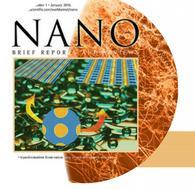 Recent Progress of Polyurethane-Based Materials for Oil/Water Separation
Recent Progress of Polyurethane-Based Materials for Oil/Water Separation
Gailan Guo, Libin Liu, Zhao Dang, Wenyuan Fang
With the development of society, oil pollution has become more and more serious, it is becoming a global issue to separate oil and water mixture. Currently, a variety of functional materials have been successfully prepared for oil/water separation. Among them, polyurethane is an attractive candidate due to its low cost, wear-resistance and excellent mechanical properties. This report summarizes the design strategy of polyurethane-based materials and their applications in oil/water separation. The progress made so far will guide further development of polyurethane-based materials for oil/water separation.
Keywords: Polyurethane; oil/water separation; membrane; foam
Electrochemical Performance of Lithium-Ion Capacitors Using Pre-Lithiated Multiwalled Carbon Nanotubes as Anode
Manyuan Cai, Xiaogang Sun, Yanyan Nie, Wei Chen, Zhiwen Qiu, Long Chen, Zhenhong Liu, Hao Tang
Pre-lithiated multiwalled carbon nanotube anode was prepared by internal short circuit approach(ISC) for 5 min, 30 min, 60 min and 120 min respectively. Lithium ion capacitors (LICs) were assembled by using pre-lithiated multiwalled carbon nanotubes as anodes and activated carbon (AC) as cathodes. The structure of multiwalled carbon nanotubes and electrodes were investigated by scanning electron microscopy (SEM) and transmission electron microscopy (TEM). The electrochemical performance of pre-lithiated multiwalled carbon nanotube electrodes and pristine carbon nanotube electrodes were tested by galvanostatic charge/discharge and electrochemical impedance. The results indicated that pre-lithiation carbon nanotubes greatly improved the charge/discharge performance of LICs. The energy density was four times than conventional electric double-layer capacitors (EDLCs) at the current density of 100 mA/g. The LICs achieved a specific capacitance of 59.3 F/g at the current density of 100mA/g with 60min pre-lithiatiation process. The maximum energy density and power density was 96W h/kg and 4035 W/kg, respectively. The energy density still remained about 89.0% after 1000 cycles. The LIC showed excellent supercapacitor performance.
Keywords: Pre-lithiatiation; anode; multiwalled carbon nanotubes (MWCNTs); activated carbon (AC); lithium-ion capacitor
Rationally Designed Three-Dimensional NiMoO4/Polypyrrole Core–Shell Nanostructures for High-Performance Supercapacitors
Tingting Chen, Guangning Wang, Qianyan Ning
Electrodes of rationally designed composite nanostructures can offer many opportunities for the enhanced performance in electrochemical energy storage. This paper attempts to illustrate the design and production of NiMoO4/polypyrrole core–shell nanostructures on nickel foam to be used in supercapacitor via a facile hydrothermal and electrodeposition process. It has been verified that this novel nanoscale morphology has outstanding capacitive performances. While employed as electrodes in supercapacitors, the composite nanostructures showed remarkable electrochemical performances with a great areal capacitance (3.2 F/cm2 at a current density of 5 mA/cm2), and a significant cycle stability (80% capacitance retention after 1000 cycles). The above results reveal that the composite nanostructures may be a likely electrode material for high-performance electrochemical capacitors.
Keywords: Polypyrrole; NiMoO4; core–shell; supercapacitor
Synthesis and Characterization of Pb@GaS Core-Shell Fullerene-Like Nanoparticles and Nanotubes
Olga Brontvein, Lothar Houben, Ronit Popovitz-Biro, Moshe Levy, Daniel Feuermann, Reshef Tenne, Jeffrey M. Gordon
New types of core–shell nanoparticles are reported: Pb@GaS fullerene-like and nanotubular structures, achieved via the continuously high reactor temperatures and ultra-hot strong-gradient annealing environments created by highly concentrated sunlight. Structural and chemical characterizations suggest a formation mechanism where vaporized Pb condenses into nanoparticles that are stabilized as they become covered by molten GaS, the ensuing crystallization of which creates the outer layers. Hollow-core GaS fullerene-like nanoparticles and nanotubes were also observed among the products, demonstrating that a single solar procedure can generate a variety of core–shell and hollow nanostructures. The proposed formation mechanisms can account for their relative abundance and the characterization data.
Keywords: Core-shell; inorganic fullerene-like; nanotubes; gallium sulfide; Pb-filled; solar ablation
Optimized Assembly of Micro-/Meso-/Macroporous Carbon for Li–S Batteries
Qiong Tang, Heqin Li, Min Zuo, Jing Zhang, Yiqin Huang, Peiwen Bai, Jiaqi Xu, Kuan Zhou
In order to explore the effect of hierarchical porous carbon on the performances of Li–S batteries, we synthesized three kinds of micro-/meso-/macroporous carbon materials with different pore properties by facile hard-template method. Different from the majority of reports on porous carbon ensuing large specific surface area (SSA) and total pore volume, it was found that in the case of identically high sulfur content, the pore size distribution substantially influences the performances of Li–S batteries rather than the SSA and total pore volume. Furthermore, in the assembly of micro-/meso-/macropores, the micropore volume ratio to the total pore volume is dominant to the capabilities of batteries. Among the samples, the porous carbon carbonized with the precursor of sucrose at 950 oC presents the highest initial discharge specific capacity of 1327 mAh/g and retention of 630 mAh/g over 100 cycles at 0.2C rate along with the best rate capability. This sample possesses the largest micropore volume ratio of 47.54% but a medium SSA of 1217 m2/g and inferior total pore volume of 0.54 cm3/g. The abundant micropores effectively improve the conductivity of dispersed sulfur particles, inhibit the loss of sulfur series and enable the cathode to exhibit superior electrochemical performances.
Keywords: Li–S battery; micro-/meso-/macroporous carbon; specific surface area; total pore volume; pore size distribution
Preparation and Characterization of Nitrogen-Containing Cellular Activated Carbon for CO2 and H2 Adsorption
Weigang Zhao, Lu Luo, Mizi Fan
New monolithic nitrogen-containing microporous cellular activated carbon was successfully prepared from phenol-urea-formaldehyde (PUF) organic foam for CO2 and H2 adsorption and was characterized by thermogravimetric analysis (TG), scanning electron microscope (SEM), Fourier transform infrared spectroscopy (FTIR), elemental analysis (EA), a mechanical testing machine, N2-sorption and H2/CO2 sorption. The carbon yield was approximately 50% for carbonization and the burn off for activation ranged from 40% to 56%, which linearly increased with activation time. The macroporosity corresponded to the connected network of cells with diameters ranging from 100 μm to 600 μm, and the pinholes in the cell walls had diameters ranging from 1 μm to 2 μm. The micro/mesoporosity is located at the inner surface of the cells. Thus, higher adsorption kinetics than usual from activated carbon are expected. The developed carbon with the highest SBET (1674 m2/g) and highest VDR (0.86cm3/g) contained 1.5% nitrogen, had a CO2 adsorption capacity of 3.53 mmol/g at 298K, and had an H2 adsorption capacity of 1.9 wt.% at 77K, both at atmospheric pressure (1 bar), which were among the best in activated carbons from physical activation.
Keywords: Cellular activated carbon; nitrogen doping; CO2 capture; H2 storage
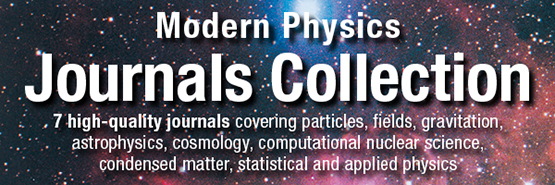
Сообщения
1 - 27 из 102
Начало | Пред. |
1
2
3
4
|
След.
|
Конец
|
